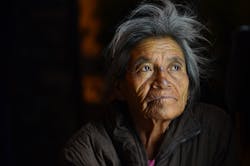Study reports increase in homebound older adults, especially Blacks and Hispanics, during pandemic
In a paper published in JAMA Internal Medicine, Mount Sinai researchers describe an increase in the numbers of homebound older adults, likely driven by the pandemic, from 5% in the previous decade to 13% of the population in 2020.
Homebound rates were highest in non-Hispanic Black and Hispanic/Latino populations, who also reported poorer health and less digital access.
The researchers gathered data from the National Health and Aging Trends Study 2020, which publishes annual surveys of homebound status, reviewing a total of 10,785 records of older adults from 2011-2020.
The study found the following data points for 2020:
· Those reporting “fair/poor health” included 65.3% of Hispanics, versus 43.6% of Blacks and 35.3% of Whites.
· Those reporting depression included 43% of Hispanics, versus 24.5% of Blacks and 26.3% of Whites.
· Those reporting that they did not have a computer included 76.9% of Hispanics, 57.9% of Blacks, and 41.6% of Whites.
· Those reporting they “did not email/text” included 67.8% of Hispanics, 55.4% of Blacks, and 45.1% Whites.
“We’ve known that the COVID-19 pandemic has disproportionately impacted older adults from communities of color in terms of illness and death, but this study shows the large disparities in rates of being homebound. While this may represent wise adherence to social distancing recommendations and be reflective of the strong regional differences in communities impacted by COVID-19, it is important that we understand the impacts that being homebound might have for years to come,” says Claire Ankuda, MD, MPH, Assistant Professor, Geriatrics and Palliative Medicine, Icahn School of Medicine at Mount Sinai.

